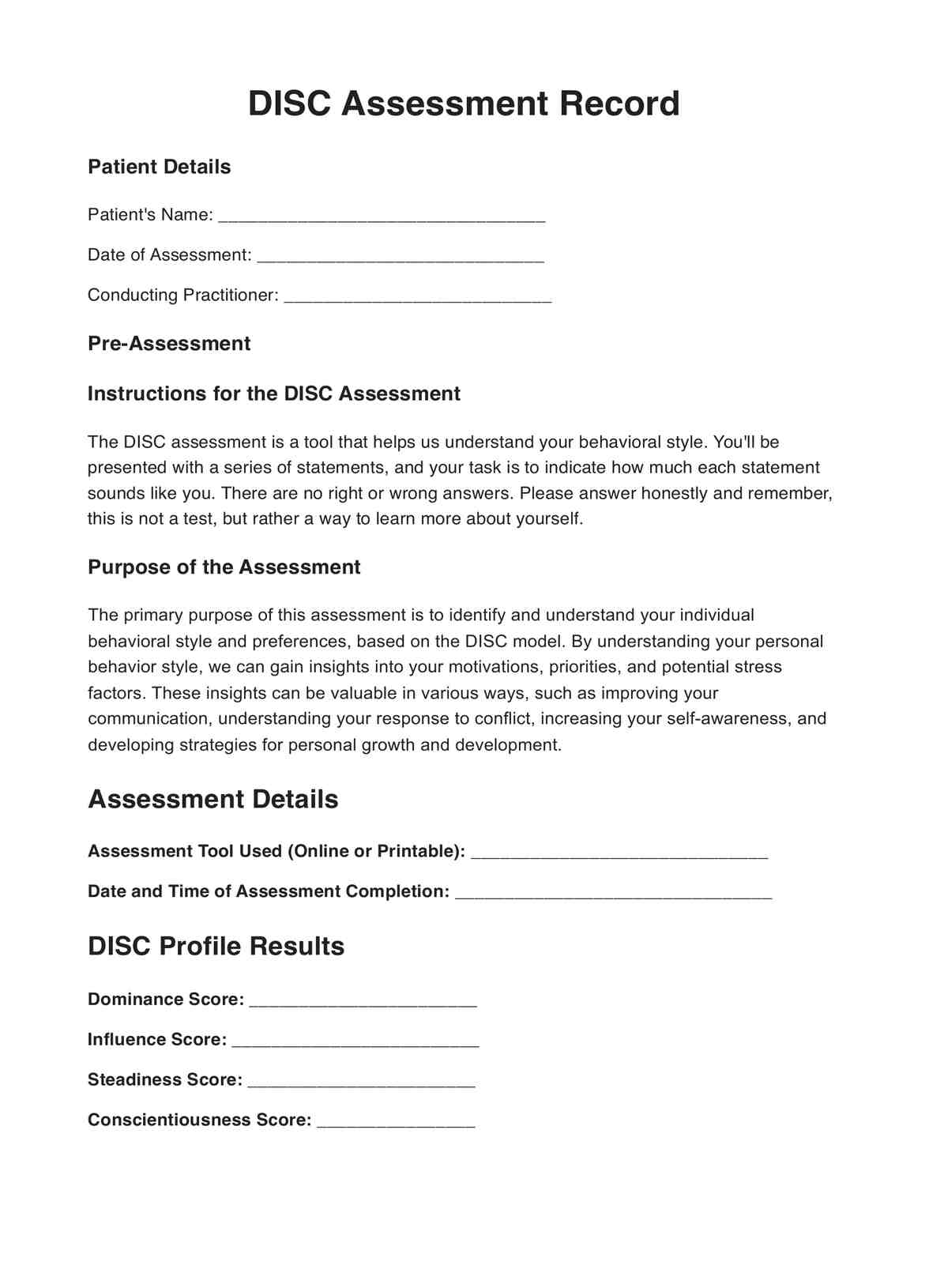The four DISC personality types are dominance (D), influence (I), steadiness (S), and conscientiousness (C). Each type describes a distinct behavioral style and set of characteristics, such as how a person approaches problems, interacts with others, and responds to the environment.

DISC Assessment
Learn about DISC assessments, their types, meanings, and how to use them for free. Download our free PDF for a practical example.
DISC Assessment Template
Commonly asked questions
Yes, the DiSC Assessment is a well-established tool based on the work of psychologist William Moulton Marston and has been extensively researched and refined over the decades. The DISC model provides a reliable framework for understanding individual behavioral preferences and interpersonal dynamics.
The DiSC Assessment measures an individual's preferences across the four personality dimensions. Each person receives a score for each of the four styles, indicating the relative strength of that particular behavioral tendency. These scores determine the person's primary type and any secondary or blended styles they may exhibit.
EHR and practice management software
Get started for free
*No credit card required
Free
$0/usd
Unlimited clients
Telehealth
1GB of storage
Client portal text
Automated billing and online payments











